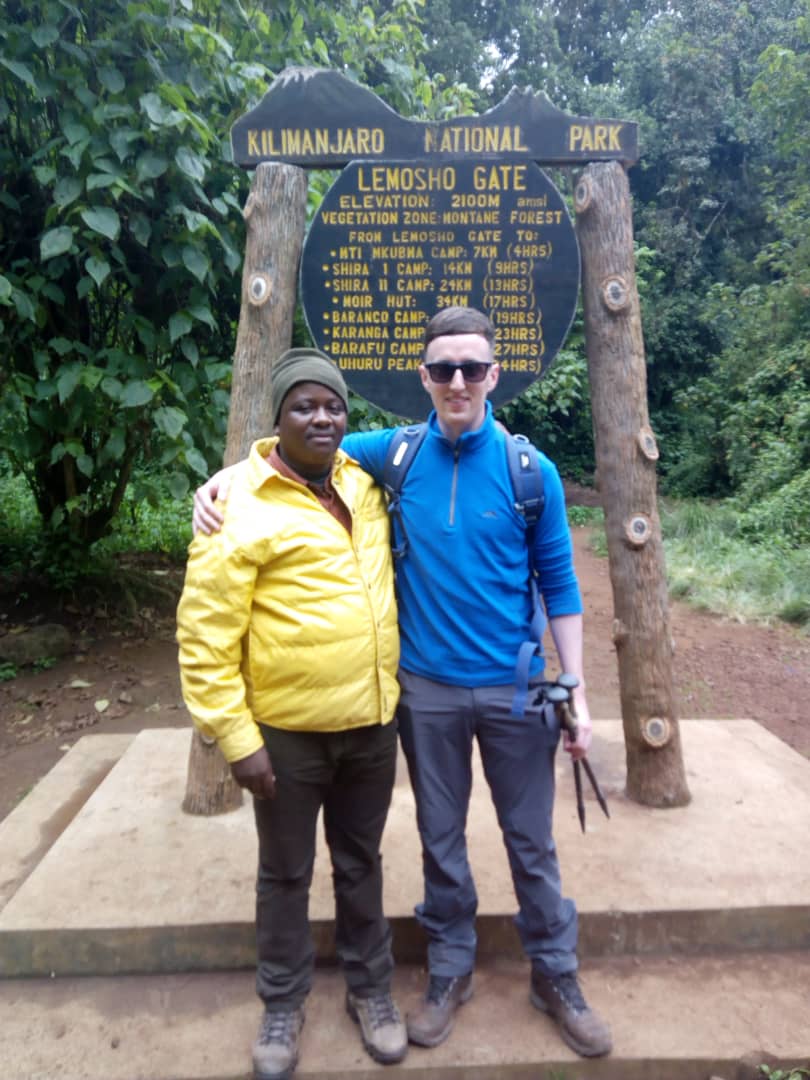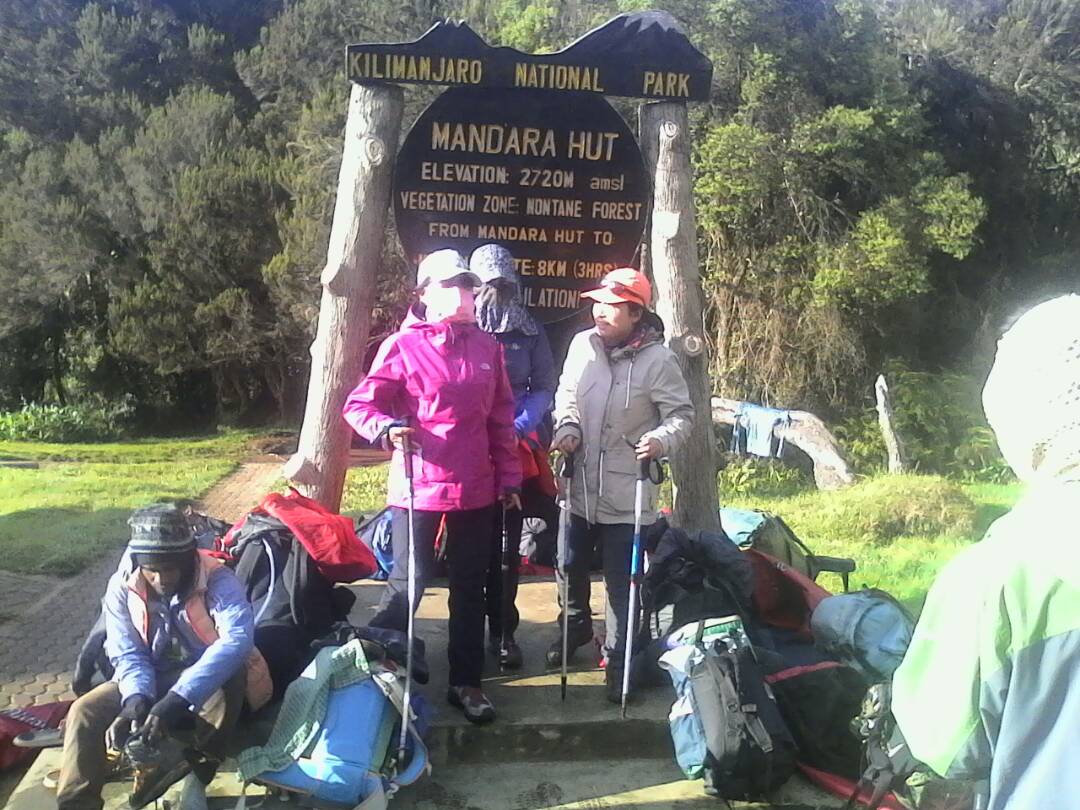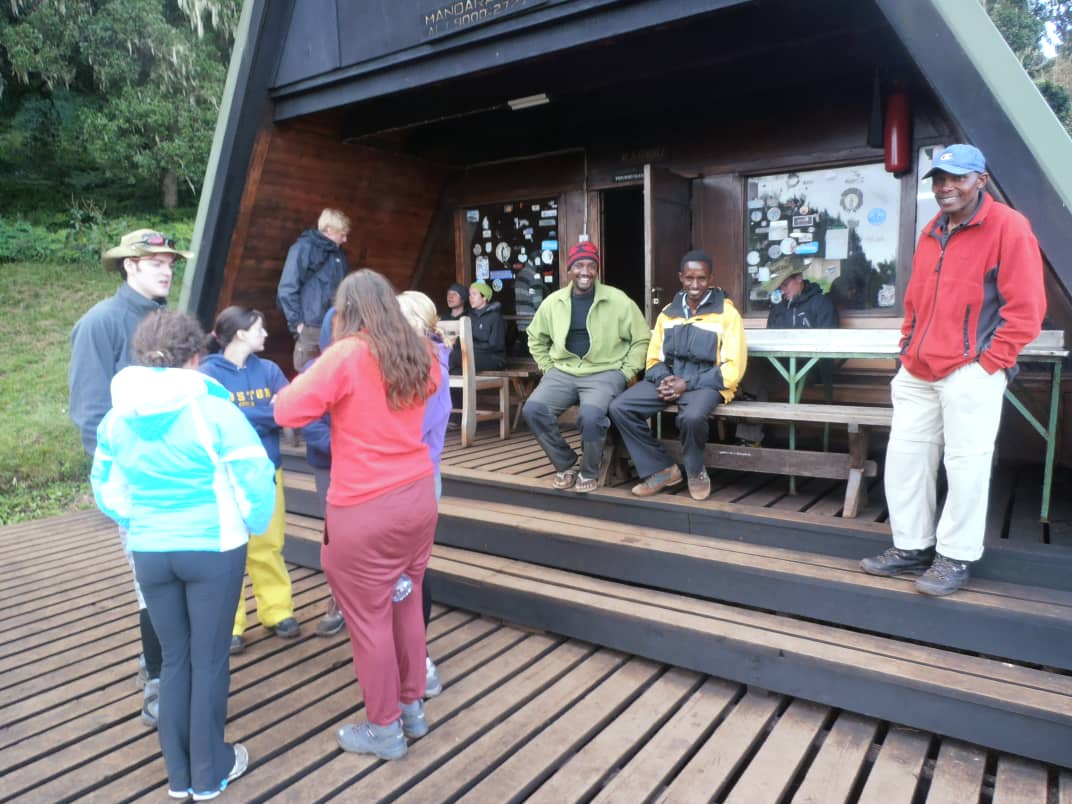
MT.Kilimanjaro Lemosho Routs
7 Days / 6 Nights on the Mountain
Shira/Lemosho is a beautiful route with gentle ascents approaching the mountain from the west. We pass through the Lemosho Glades and traverse the Shira Plateau, providing stunning views of Kibo, Kilimanjaro’s main peak. We will then proceed in a clockwise direction below the southern face of the mountain, climb Lava Tower for magnificent 360 degree vistas, ascend the Great Barranco Wall, a challenging and exhilarating scramble, and approach Uhuru Summit from Barafu and the ridge that abuts the South East Valley. This approach provides incredible views of Mawenzi, Kilimanjaro’s remnant volcanic cone.
Day1. Arusha - Londorossi Gate (2000m) to Big Tree Camp (2650m), 4 hours walk.
After breakfast your guide will meet for the climbing briefing the we will drive you to Londorossi Gate, where you will meet the porters, thereafter you will undergo the registration formalities and drive to Lemosho starting point. We begin our climb at about 2000m, walking for a few hours through the thick and undisturbed montane forest to our camp for the night. Many beautiful flowers are observed en route and with luck we will spot colobus monkeys and possibly signs of elephants. In the night you may hear the tree hyrax.
Day2. Big Tree Camp to Shira 1 Camp (3500m) – 4 hours walk.
Today we will reach the west side of the Shira Plateau in a hiking time of 6 hours. Taking our time walking through the forest will allow us to observe its animal and bird life. The day’s hike takes us from the montane forest, through a transition zone, and into the heath zone, where the old lava flows are visible. Your guides will point out unique environmental differences that characterize these zones. After a picnic lunch we reach the edge of the Plateau and then our camp that provides a dramatic view of Kilimanjaro and its glaciers
Day3. Shira 1 Camp to Shira 2 Camp (3860m) - 5 hours walk
Today is an easy paced acclimatization day of 4 to 5 hours hiking. Camp is set higher on the Shira Plateau with more expansive views of Kilimanjaro. There is a conditioning hike in the afternoon where you can enjoy the clusters of giant lobelias and senecios that grow at this elevation.
Day4. Shira 2 Camp to Baranco camp (3950m – 5 to 6hrs walk) via Lava Tower (4600m)
Today is another acclimatization day as we have a mostly uphill climb of 5 hours to an elevation over 4500m at Lover tower then descend to Baranco Valley at 3950m. We will pass through the alpine moorland zone where plants are extremely hardy and consist of lichens, grasses, and heather, to reach Kilimanjaro’s alpine desert zone. You will have a spectacular view of the steep Western Breach, which we will not be doing on this climb. After having a hot lunch at Lover tower we will have approximately 1 and half hours descent to the baranco Valley which is dominated by the beautiful giant senecions and Lobelia moorland forest where your camp will be set. This scramble will help prepare you for the climb tomorrow.
Day5 .23/08/2012: Baranco camp to Barafu Camp (4600m) – 5 hours walk
As we begin trekking today the trail turns steadily uphill. The temperature will grow colder and the landscape more sparse as we work our way to Barafu Camp. BARAFU means, “ice” in Kiswahili. It will take you about 3 hours hike to Karanga Valley where you will stop for the lunch over the Karangara ridge the about 2 more hours to reach the base camp Barafu hut. The Camp is set on an exposed ridge and is the staging point for our push to the summit. After an early dinner we will rest. At midnight, under the stars and hopefully a brightly shining moon, we will begin the final ascent. We are going to go POLE POLE and drink plenty of water and tea, refuel with small snacks, and enjoy this final climb to the summit.
Day6.Barafu Camp to Uhuru Peak (5895m – 6 to 7 hours walk) to Mweka Camp (3000m - 5 hours descending)
We will reach Uhuru Peak, the summit of Kilimanjaro at 5895m. around 8 a.m. At this early hour, before the clouds close in, you will have spectacular views of Africa in all directions. The hiking time is 7 to 8 hours. After a brief stay of 15-20 minutes and photos all around, we will descend 2 to 3 hours to our Barafu Camp for lunch, rest, and to pick up belongings. Then we continue downhill 3 hours to the edge of the Mweka Forest. Tonight’s camp is 3000m below the summit! It is a long descent and trekking poles are recommended. Eat, share your experiences of the climb, and sleep soundly. Congratulations, you made it to the Roof of Africa!
Day7. Mweka Camp to Arusha. 3 hours walk, 2 hours drive.
After well sleep and breakfast, you will have a time to take a group photo with your climbing crew, then descending again through the tropical forest, the trail is rather steep than the Machame side, it may also be wet and slippery so we recommend using walking pole for this final descent. At the Mweka gate you will sign out of the park, for those who have made it to the top will be rewarded by Kilimanjaro certificate for souvenir then the car will drive you to Moshi where you will have a lunch then continue to your hotel in Arusha for a shower and big relax.
End of the Climb.
8 Days / 7 Nights on the Mountain
Shira/Lemosho is a beautiful route with gentle ascents approaching the mountain from the west. We pass through the Lemosho Glades and traverse the Shira Plateau, providing stunning views of Kibo, Kilimanjaro’s main peak. We will then proceed in a clockwise direction below the southern face of the mountain, climb Lava Tower for magnificent 360 degree vistas, ascend the Great Barranco Wall, a challenging and exhilarating scramble, and approach Uhuru Summit from Barafu and the ridge that abuts the South East Valley. This approach provides incredible views of Mawenzi, Kilimanjaro’s remnant volcanic cone.
Day 1: Arusha - Londorossi Gate (2000m) to Big Tree Camp (2650m), 4 hours walk.
After breakfast we will drive to Londorossi Gate, where you will meet your guides and mountain crew and enter the Kilimanjaro National Park. We begin our climb at about 2000m, walking for a few hours through the thick and undisturbed montane forest to our camp for the night. Many beautiful flowers are observed en route and with luck we will spot colobus monkeys and possibly signs of elephants. In the night you may hear the tree hyrax.
Day 2: Big Tree Camp to Shira 1 Camp (3500m) – 4 hours walk. .
Today we will reach the west side of the Shira Plateau in a hiking time of 6 hours. Taking our time walking through the forest will allow us to observe its animal and bird life. The day’s hike takes us from the montane forest, through a transition zone, and into the heath zone, where the old lava flows are visible. Your guides will point out unique environmental differences that characterize these zones. After a picnic lunch we reach the edge of the Plateau and then our camp that provides a dramatic view of Kilimanjaro and its glaciers.
Day 3: Shira 1 Camp to Shira 2 Camp (3860m) - 5 hours walk.
Today is an easy paced acclimatization day of 4 to 5 hours hiking. Camp is set higher on the Shira Plateau with more expansive views of Kilimanjaro. There is a conditioning hike in the afternoon where you can enjoy the clusters of giant lobelias and senecios that grow at this elevation.
Day 4: Shira 2 Camp to Baranco camp (3950m – 5 to 6 hours walk) via Lava Tower (4600m) .
Today is another acclimatization day as we have a mostly uphill climb of 5 hours to an elevation over 4500m at Lover tower then descend to Baranco Valley at 3950m. We will pass through the alpine moorland zone where plants are extremely hardy and consist of lichens, grasses, and heather, to reach Kilimanjaro’s alpine desert zone. You will have a spectacular view of the steep Western Breach, which we will not be doing on this climb. After having a hot lunch at Lover tower we will have approximately 1 and half hours descent to the baranco Valley which is dominated by the beautiful giant senecions and Lobelia moorland forest where your camp will be set. This scramble will help prepare you for the climb tomorrow.
Day 5: Baranco Camp to Karanga Valley Camp (4015 m) - 4 hours walk. .
Today we will climb the Great Barranco rock wall - not too steep but challenging for some – which our guides make safe and accessible for every¬one. We will go pole pole (meaning “slowly” in Kiswahili). You will be able to see the breathtaking Heim Glacier. We descend into the Karanga Valley and then to our camp on a ridge above the valley, where you will be able to enjoy a hot lunch and rest.
Day 6: Karanga Valley Camp to Barafu Camp (4600m) – 4 hours walk.
As we begin trekking today the trail turns steadily uphill. The temperature will grow colder and the landscape more sparse as we work our way to Barafu Camp. Barafu means, “ice” in Kiswahili. Hiking time is 4 to 5 hours. The Camp is set on an exposed ridge and is the staging point for our push to the summit. After an early dinner we will rest. At midnight, under the stars and hopefully a brightly shining moon, we will begin the final ascent. We are going to go pole pole and drink plenty of water and tea, refuel with small snacks, and enjoy this final climb to the summit.
Day 7: Barafu Camp to Uhuru Peak (5895m – 6 to 7 hours walk) to Mweka Camp (3000m - 5 hours descending) .
We will reach Uhuru Peak, the summit of Kilimanjaro at 5895m. around 8 a.m. At this early hour, before the clouds close in, you will have spectacular views of Africa in all directions. The hiking time is 7 to 8 hours. After a brief stay of 15-20 minutes and photos all around, we will descend 2 to 3 hours to our Barafu Camp for lunch, rest, and to pick up belongings. Then we continue downhill 3 hours to the edge of the Mweka Forest. Tonight’s camp is 3000m below the summit! It is a long descent and trekking poles are recommended. Eat, share your experiences of the climb, and sleep soundly. Congratulations, you made it to the Roof of Africa!
Day 8: Mweka Camp to Arusha. .
After well sleep and breakfast, you will have a time to take a group photo with your climbing crew, then descending again through the tropical forest, the trail is rather steep than the Machame side, it may also be wet and slippery so we recommend using walking pole for this final descent. At the Mweka gate you will sign out of the park, for those who have made it to the top will be rewarded by Kilimanjaro certificate for souvenir then the car will drive you to Moshi where you will have a lunch then continue to your hotel in Arusha for a shower and big relax.
End of the climb
The following is on offer:
Mto wa Mbu is situated on the way from Arusha to the national parks in northern Tanzania, just at the foot of the Rift Valley. Located on the way to Ngorongoro and Serengeti, it is an ideal resting place for most safari travellers. A visit to Mto Wa Mbu includes: A walk thought the farms in the green oasis at the foot of the Rift Valley - A climb to Balaa Hill from where you can see the whole town - A view into the culture of the many different tribes living in the area - A trip to the Miwaleni Lake and waterfall - Visit to development projects that aim at improving agriculture and start income generating activities for the farmers - Explanation about the irrigation system







